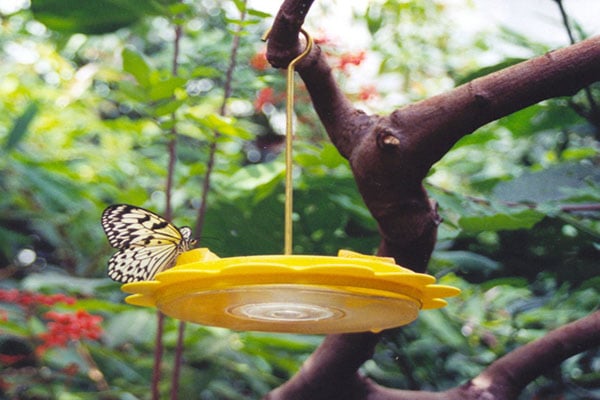Transforming your garden into a butterfly-friendly haven is a rewarding and simple way to contribute to local ecosystems. Butterflies are not only captivating to observe with their vibrant colors and graceful movements, but they also play a vital role in pollination, helping plants thrive. By setting up a fruit feeder, you can provide these beautiful insects with a consistent food source, encouraging them to visit and return to your garden regularly. Fruit feeders are low-effort yet highly effective in attracting butterflies, bringing a delightful increase in activity to your outdoor space.
Whether you’re a seasoned gardener or a beginner, creating a butterfly fruit feeder is a simple task that can significantly enhance your garden’s appeal. Below are four easy-to-follow steps to make your own fruit feeder, designed to attract butterflies and give them the nourishment they need to flourish.
Step 1: Choose Your Feeder Design
The first step in making a butterfly fruit feeder is to select a design. You can go for a basic approach, like using a shallow dish, or opt for a more creative setup, such as a small wooden platform or an upside-down plate. The key is to make sure the feeder is easy to access for butterflies. It should be sturdy enough to hold the fruit and be placed in a spot where butterflies can easily land.
Step 2: Select the Right Fruit
Butterflies are drawn to overripe or rotting fruit, which is rich in sugars. Fruits like oranges, bananas, watermelon, and apples are particularly attractive to butterflies. You can slice the fruit into smaller pieces or even mash it slightly to make it easier for butterflies to feed. Keep in mind that different butterfly species may have specific preferences, so don’t be afraid to experiment with various fruits to see what works best in your garden.
Step 3: Prepare the Feeder Location
Placement is key when it comes to attracting butterflies. Ideally, position the feeder in a sunny area, as butterflies are more active in warmer conditions. A spot with some natural shelter, such as near bushes or plants, will also provide butterflies with a safe space to rest. Make sure the area is free from strong winds that could disturb the delicate creatures and their feeding process.
Step 4: Maintain Your Feeder
To keep your butterfly feeder effective, it’s important to maintain it regularly. Replace the fruit every few days to prevent mold from forming, as fresh fruit is more appealing to butterflies. If you live in an area with a lot of rain, you may want to place your feeder under some kind of cover to keep the fruit dry. Additionally, cleaning the feeder periodically will ensure that it remains an inviting space for butterflies.
Creating a fruit feeder for butterflies is an easy and enjoyable way to support these important pollinators while adding a touch of natural beauty to your garden. By following these simple steps, you can create an inviting environment that will not only attract butterflies but also contribute to a healthier, more sustainable garden ecosystem.
